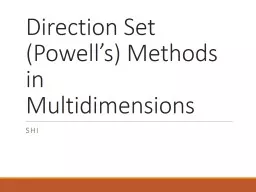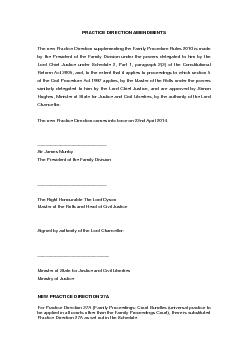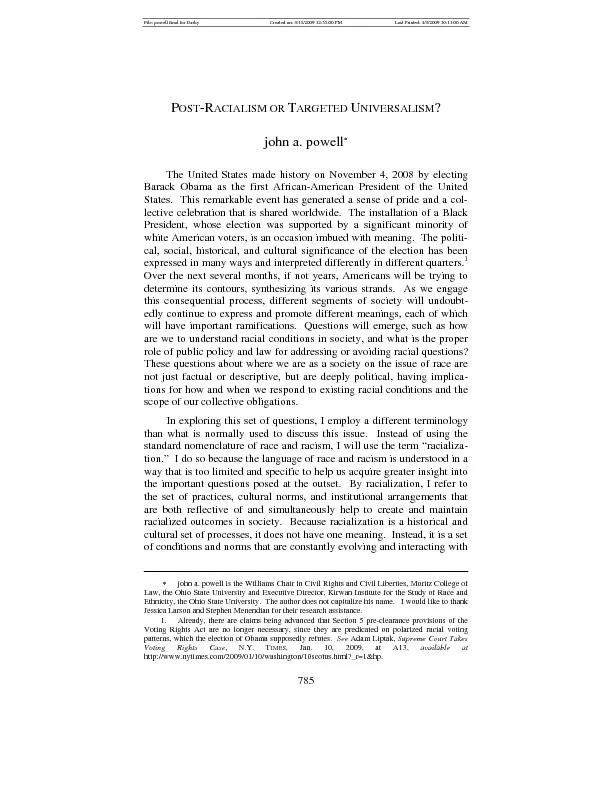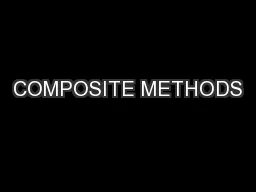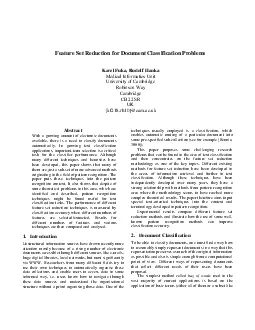PPT-Direction Set (Powell’s) Methods in
Author : tatiana-dople | Published Date : 2019-11-22
Direction Set Powells Methods in Multidimensions Shi We know 102 104 how to minimize a function of one variable If we start at a point P in Ndimensional space and
Presentation Embed Code
Download Presentation
Download Presentation The PPT/PDF document "Direction Set (Powell’s) Methods in" is the property of its rightful owner. Permission is granted to download and print the materials on this website for personal, non-commercial use only, and to display it on your personal computer provided you do not modify the materials and that you retain all copyright notices contained in the materials. By downloading content from our website, you accept the terms of this agreement.
Direction Set (Powell’s) Methods in: Transcript
Download Rules Of Document
"Direction Set (Powell’s) Methods in"The content belongs to its owner. You may download and print it for personal use, without modification, and keep all copyright notices. By downloading, you agree to these terms.
Related Documents

